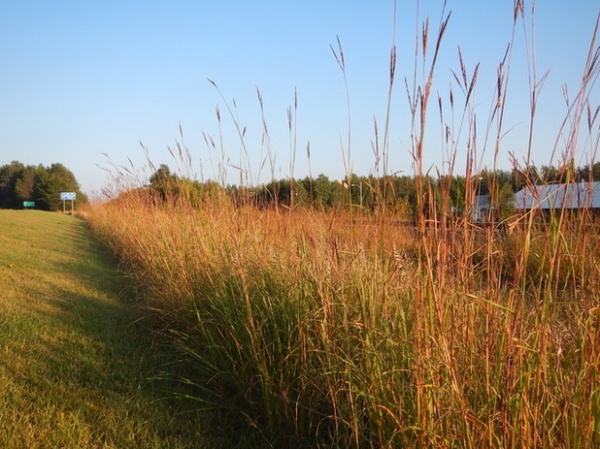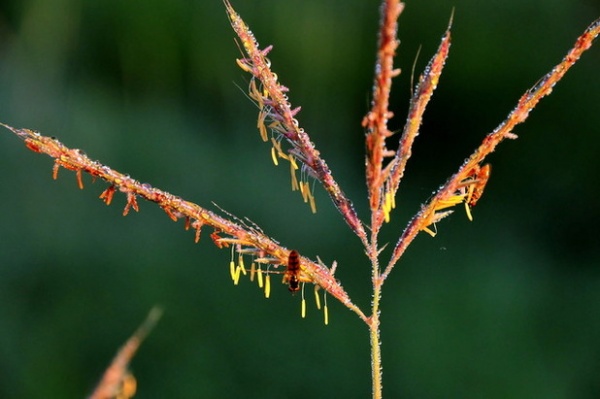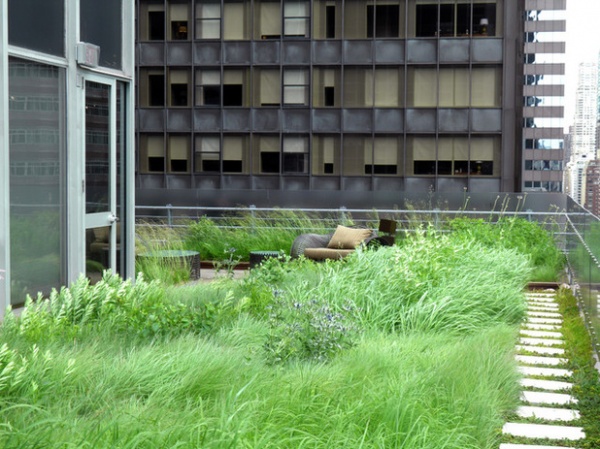Great Design Plant: Andropogon Gerardii
http://www.decor-ideas.org 10/30/2015 02:13 Decor Ideas
If you’ve ever walked a prairie or meadow remnant in fall, you’re sure to have seen big bluestem (Andropogon gerardii), with its fanned-out seed heads forming gorgeous silhouettes against a bright blue sky. Native to most of the country, big bluestem is a workhorse in the garden, and it seldom needs supplemental water once established. Its fall color in a clump of several grasses is eye-popping, so bring the echo of the tallgrass prairie home with big bluestem.

Botanical name: Andropogon gerardii
Common names: Big bluestem, turkey foot
Origin: Native to all states except Washington, Oregon, Idaho, California and Nevada
Where it will grow: Hardy to minus 40 degrees Fahrenheit, or minus 40 degrees Celsius (USDA zones 3 to 9; find your zone)
Water requirement: Little to regular water in loam, clay or sandy soil (determine your soil type)
Light requirement: Full sun to a bit of shade
Mature size: 5 to 7 feet tall in bloom (2 to 3 feet tall before bloom) and 2 to 3 feet wide
Benefits and tolerances: Drought-tolerant once established in loam, sandy or clay soils
Seasonal interest: Blooms in late summer to midfall, depending on the region
When to plant: Plant potted or bare-root plants in spring to early fall; sow seeds in late fall through early summer.
Photo by Matt Lavin

Distinguishing traits. Big bluestem reflects the original tallgrass prairie in the middle of the U.S., a prairie ecosystem now almost entirely gone. With deep roots, this staple tallgrass is very drought-tolerant, and some of those roots will decay and make for rich, well-drained soil over time. Its fall color ranges from yellow to orange to rust to pink, while the seed heads resemble a turkey’s foot in mid to late autumn.
This grass is a nexus of wildlife activity. Ranchers call big bluestem “ice cream,” as it’s a favorite forage plant for grazers like cattle and bison. A good stand is ideal nesting habitat for several songbird species. The larvae of many skipper butterfly species also use this native tallgrass as a host plant.
Photo by Tom Koerner for the USFWS Mountain-Prairie

How to use it. Big bluestem can be wildlife habitat and a workhorse for erosion control, and can act as a living fence or screen. It’s best to cluster multiple bluestem plants together so that they can support one another, or plant it with tall perennial flowers, such as ironweed (Vernonia fasciculata) or tall blazingstar (Liatris aspera), that can do the same. Big bluestem is an architectural statement as it reaches toward the sky, while its dense foliage serves as a ground cover to outcompete weeds and conserve soil moisture.
Big bluestem is a bunch grass and will spread only by seeds, which are wind-pollinated. In open ground with full sun and ideal soil (loam and medium moisture), it may spread somewhat aggressively in a small garden. However, in tightly planted gardens, it tends to simply stay put and mature gloriously.
Planting notes. The seeds don’t need winter treatment, so you can broadcast-plant them, scattering the seeds across the soil in spring after the danger of frost has passed. Being a warm-season grass, it will be late to perk up in early summer, but when it does, the grass will go into hyperdrive.
Try not to overwater or fertilize it, as this tends to make the tall seed spikes flop. Bare-root and potted plants can go in anytime up to about midfall, right around the time of the first frost. Plant later and it might not establish a good root zone before the soil freezes (if your soil doesn’t freeze, you’re in the clear to dig almost anytime). Wait until early spring to cut down the dried foliage to its base.
Shown: A matrix of grasses and wildflowers planted on the 17th floor of the Western Publishing Building in midtown Manhattan. The matrix includes big bluestem, prairie dropseed (Sporobolus heterolepis), Indian grass (Sorghastrum nutans), autumn moor grass (Sesleria autumnalis), ‘Prairie Blues’ little bluestem (Schizachyrium scoparium ‘Prairie Blues’), wavy hairgrass (Deschampsia flexuosa) and ‘Blonde Ambition’ blue grama (Bouteloua gracilis ‘Blonde Ambition’)
More
How to Get Your Prairie On
Browse plants native to other regions of the U.S.
Related Articles Recommended












